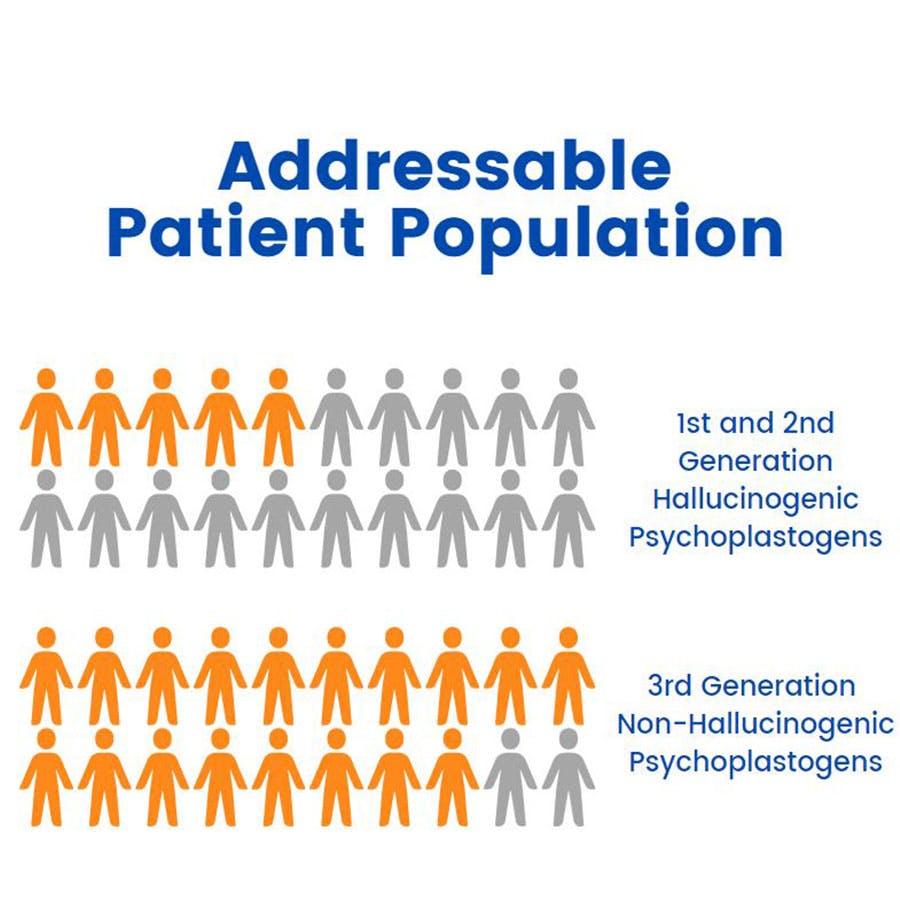Our Science
Psychedelic medicine represents a breakthrough in the treatment of mood disorders, akin to the discovery of ketamine’s antidepressant activity in the early 2000s. However, like ketamine, the side effect profile of psychedelics limits their practical potential as medicines – the induction of hallucinations and requirement for in-clinic administration limit scalability and addressable patient-populations.
Our scientific founder, Professor David E. Olson at UC Davis, discovered that psychedelics and related compounds were exceptionally good at promoting structural and functional neuroplasticity. Dubbed psychoplastogens, these molecules are quickly becoming the gold standard in circuit-based approaches for improving mental health. However, 1st generation psychoplastogens including ketamine (e.g., Spravato) and serotonergic psychedelics (e.g., psilocybin, LSD) have several limitations: abuse liability, cardiovascular effects, and hallucinogenic properties that necessitate in-clinic administration and patient monitoring, which drastically increases the complexity and cost of administering these therapeutics. Several companies are developing novel formulations of these compounds as 2nd generation psychoplastogens, altering aspects such as PK but preserving hallucinogenicity and basic pharmacology.
How Delix's Psychoplastogens Work
Delix's psychoplastogens induce neuroplasticity and restore neural circuts resulting in persistent therapeutic effects
Delix is developing 3rd generation psychoplastogens - the future of CNS therapeutics
Eliminating hallucinogenic liability allows these medications to be taken at-home and significantly broadens the range of brain disorders that can be treated. Our discovery platform allows us to identify the most promising psychoplastogens, with more favorable safety and efficacy profiles compared to ketamine and psychedelic compounds. With over 8 unique chemical scaffolds and counting, Delix has generated hundreds of non-hallucinogenic compounds that promote neuroplasticity as well as a treasure trove of institutional knowledge that will springboard these 3rd generation psychoplastogens into the clinic.
Our circuit-based approach
Historically, the “Monoamine Imbalance” hypothesis of depression played a dominant role in psychiatry and drug development. However, while traditional antidepressants rapidly elevate monoamines like serotonin, norepinephrine, and dopamine, their clinical efficacy is delayed and about 1/3 of patients will not respond to them. Clinical and preclinical data across multiple modalities began to converge on pathways involved in neuroplasticity as being critically important in the treatment of brain disorders. Psychoplastogens are among the most robust plasticity-promoting compounds studied to date.
Psychoplastogens: Evolution of the psychedelic revolution.
Delix Therapeutics team members David E. Olson, Retsina Meyer, and Kurt Rasmussen joined Nature Research Custom Media and Charles River Laboratories to dive into the therapeutic behavioral effects of non-hallucinogenic psychoplastogens. Learn more about these cutting-edge novel neurotherapeutics by tuning in to their webinar.
-
Read more about our groundbreaking technologies
publications






